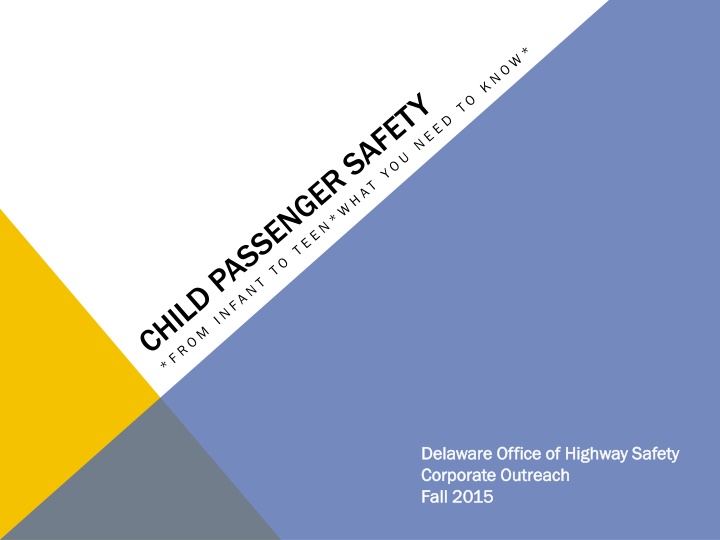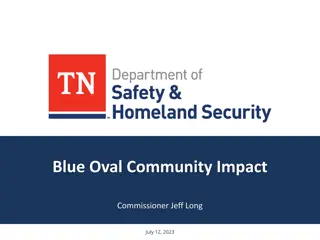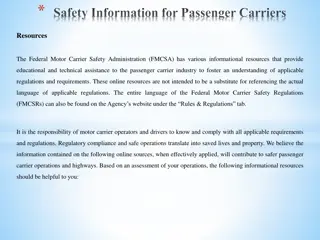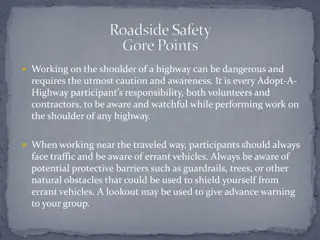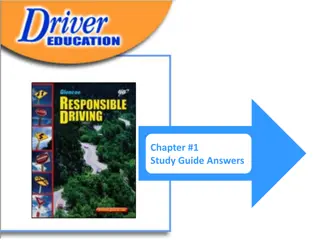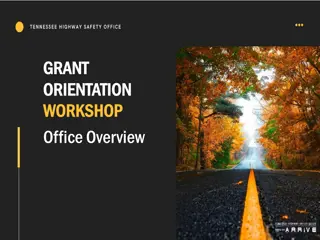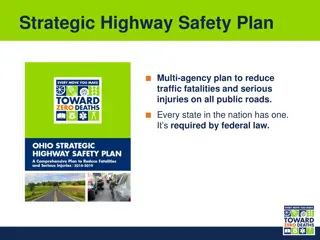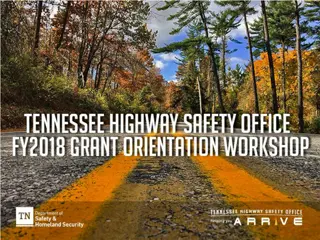Child Passenger Safety Guidelines by Delaware Office of Highway Safety
Learn about Delaware's strict seat belt and child passenger safety laws that aim to protect children from motor vehicle crashes. Discover best practices for selecting, installing, and harnessing child seats properly to ensure the safety of young passengers.
Uploaded on Sep 12, 2024 | 3 Views
Download Presentation

Please find below an Image/Link to download the presentation.
The content on the website is provided AS IS for your information and personal use only. It may not be sold, licensed, or shared on other websites without obtaining consent from the author.If you encounter any issues during the download, it is possible that the publisher has removed the file from their server.
You are allowed to download the files provided on this website for personal or commercial use, subject to the condition that they are used lawfully. All files are the property of their respective owners.
The content on the website is provided AS IS for your information and personal use only. It may not be sold, licensed, or shared on other websites without obtaining consent from the author.
E N D
Presentation Transcript
Delaware Office of Highway Safety Delaware Office of Highway Safety Corporate Outreach Corporate Outreach Fall 2015 Fall 2015
DID YOU KNOW? Motor vehicle crashes are the number one cause of death among children ages 1 to 19. Children ages 2 to 5 who use safety belts prematurely are four times more likely to suffer a serious head injury in a crash than those in child safety seats or booster seats. Of those children ages 12 and under who died in vehicle crashes in 2011, 31 percent were unrestrained.
WHAT IS DELAWARES SEAT BELT LAW? Everyone in the vehicle, including backseat passengers and children, must wear seat belts properly. Lap and shoulder belts must be worn and shoulder belts must not be placed behind the back or under the arm. The driver will receive a $83.50 ticket for the failure of anyone in the vehicle to buckle up.
CHILD PASSENGER SAFETY LAWS FOR CHILDREN All children must be properly restrained in a federally approved child safety seat appropriate for the child's age, weight and height up to 8 years of age or 65 lbs whichever comes first. Children under 12 years old or 65 inches in height are required to sit in the back seat if there are active airbags in the front passenger seating position. Fines for violating the law, $83.50.
WHAT ARE BEST PRACTICES FOR CHILD SEATS? Appropriate Selection- Seat in good condition and appropriate for child s age, weight, height, and development level. Facing the Right Direction- Rear facing until 2 years of age, or height/weight limit of the seat. In the Proper Location- Rear seat is best. Center position is ideal. Never place a rear-facing seat in the front with an active air bag.
BEST PRACTICES FOR CHILD SEATS Proper Installation- According to seat and car manufacturer instructions. Proper Harnessing- Below shoulders for rear-facing, above shoulders for forward- facing. Retainer clip at armpit. Snug fitting. The best practice? Visit a fitting station and talk to a certified technician!
FREE OHS CAR SEAT FITTING STATIONS Wilmington DMV Rt. 13 South in New Castle Hours: Tuesday and Thursday 9 am - 1 pm, Wednesday 4 pm - 8 pm. For an appointment contact Larry Kelley at (302) 434-3234. Dover DMV Rt. 113 South in Dover Hours: Wednesday 4 pm - 8 pm and Tuesday 9 am 1 pm. By appointment only. Call (302) 744-2749. Delaware State Police Troop 7 At Rt. 1 S/B Lewes, DE. By appointment only. Call (302) 744-2749 for an appointment.
GRADUATING TO THE NEXT SEAT Under the age of 1 Children must always ride rear facing. Ages 1 through 3 Keep your children rear facing for as long as possible in either an infant or rear facing convertible seat. They should remain rear facing until the height and weight limit for rear facing use on that seat has been reached. Ages 4 through 7 Keep children in a forward facing seat with a harness to the maximum height and weight limit allowed by the seat. Then transition them to a booster seat. Ages 8 through 12 Keep children in a booster seat until they either exceed the height/weight requirement for the booster seat or until they are big enough to fit the criteria for fitting appropriately in a seat belt.
IS YOUR CHILD READY FOR AN ADULT SEAT BELT? For your child to properly fit a seat belt, he or she must: Be tall enough to sit without slouching; Be able to keep his or her back against the vehicle seat; Be able to keep his or her knees naturally bent over the edge of the vehicle seat; and Be able to keep his or her feet flat on the floor. Stay this way for the entire ride! Never let a child put the shoulder belt under an arm or behind the back, because it could cause severe injuries in a crash. Keep your child in the back seat because it is safer there.
PRECAUTIONS FOR TWEENS No matter how hurried you are, don t negotiate. Always model seat belt safety. Never give up until they buckle up. Never assume your kids are buckled up.
KEEP THE CONVERSATION GOING Buckling up is not a one time conversation, it is an ongoing conversation. Remind your teen that wearing a seat belt is the law. It will keep them in a secure position, and help them stay in control of the vehicle in an emergency situation.
RESOURCES Delaware Office of Highway Safety ohs.delaware.gov/carseat National Highway Traffic www.nhtsa.gov Safety Administration (NHTSA) Traffic Safety Marketing www.trafficsafetymarketing.gov Parents Central www.safercar.gov
THANK YOU! Questions? Call us. 302.744.2740.
